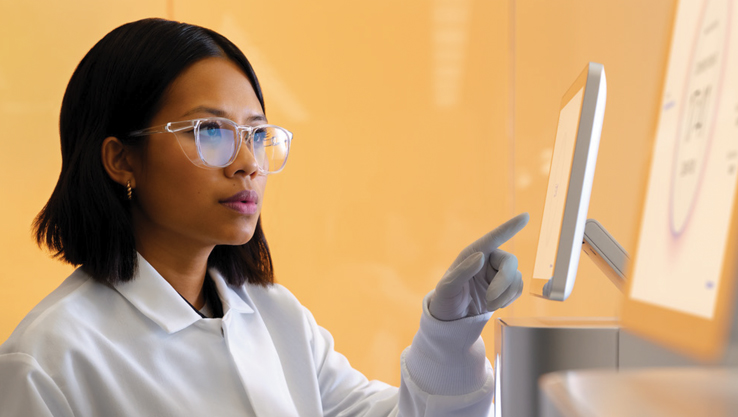Healthcare-associated infection surveillance
See how NGS is used to identify the genetic makeup of pathogens for more precise identification and tracking of outbreaks and transmission routes than ever before.
Generate accurate and complete microbial genomes, and perform comprehensive analysis of microbes
Whole-genome sequencing (WGS) of microbial isolates is an important tool for mapping genomes of novel organisms, finishing genomes of known organisms, or comparing genomes across multiple samples. Sequencing entire bacterial, viral, and other microbial genomes is important for generating accurate reference genomes, for microbial identification, and for other comparative genomic studies. 1-6
Unlike traditional methods, NGS-based microbial genome sequencing doesn’t rely on labor-intensive cloning steps, saving time and simplifying the workflow. NGS can identify low-frequency variants and genome rearrangements that may be missed or are too expensive to identify using other methods.

De novo whole-genome sequencing involves assembling a genome without the use of a genomic reference and is often used to sequence novel microbial genomes.7 Illumina sequencers provide unparalleled raw read accuracy and read depth for high-quality draft and microbial whole-genome assemblies.8
Microbial whole-genome resequencing involves sequencing the entire genome of a bacteria, virus, or other microbe, and comparing the sequence to that of a known reference. Generating rapid and accurate microbial reference genome sequence information is critical for detecting low frequency mutations, finding key deletions and insertions, and discovering other genetic changes among microbial strains. 9-12

Your email address is never shared with third parties.
Download this eBook to learn how benchtop sequencers support a broad range of applications while delivering exceptional data quality and accuracy.

Use the NGS Workflow Finder to get recommendations for your application workflows of interest so you can sequence with confidence.

Watch this webinar unveiling the MiSeq i100 Series. View application data in oncology, microbiology, and infectious disease, and gain insights from early-access users.
A fast, integrated workflow for preparing libraries for use in sequencing applications such as microbial whole-genome sequencing.
Our fastest, simplest benchtop system for microbial whole-genome sequencing.
NGS technology in an easy-to-use, inexpensive ecosystem for microbial whole-genome sequencing applications.
Simple, accessible benchtop sequencing for microbial whole-genome sequencing applications.
The SRST2 app reports the presence of STs (sequence types) from a MLST database and/or reference genes from a sequence database of virulence genes, resistance genes, and plasmid replicons.
Outbreak detection is possible through comprehensive isolate discrimination and characterization through microbial WGS.
Interested in learning more about microbial whole-genome sequencing?
Your email address is never shared with third parties.